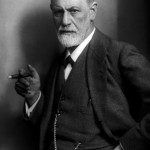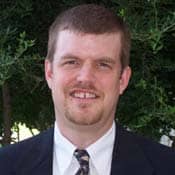Southern Baptists have announced the formation of a commission which could change the name of the Southern Baptist Convention. Changing the name does nothing to ensure Baptist growth outside the South, but it is needed nonetheless. It is time to separate "Southern" from "Baptist." This move has Baptist history on its side.
The story of the rise of the Southern Baptist Convention is an illuminating one. There was a time when there were no Baptists in the South. Indeed, compared to the northern colonies, the early South was relatively unchurched. The colonial South was officially Anglican, but that church's influence often did not extend much beyond coastal towns. Backcountry settlers were unlikely to attend religious services. Few churches existed there.
The Great Awakening of the mid-eighteenth century began to "church" the South by transferring some of the North's religious energy there. The Philadelphia Baptist Convention made concerted efforts to evangelize pockets of the region, especially around Charleston, South Carolina. But the real explosion of Baptist growth began in 1755, when Baptist missionaries from Connecticut established a church at Sandy Creek, North Carolina. Sandy Creek was led by Shubal Stearns, one of the most significant religious leaders of the eighteenth century.
Stearns represented the Separatist Baptist movement in New England, which began when pro-revival evangelicals opened illegal congregations despite the strictures of the official New England denomination, the Congregationalist church. Some of those Separatist evangelicals became convinced that the Congregationalists' practice of infant baptism was not biblical, and they began reserving baptism for people old enough to consciously repent of their sins and accept Christ as Savior. The Sandy Creek church became an extraordinary center of missionary energy, eventually penetrating all the surrounding colonies with new Baptist churches.
The Baptist South, then, began elsewhere. Indeed, the entire Baptist movement in America emerged first in England, and early Baptists in the South took many cues from northern and English Baptists. For example, Kentucky's first Baptist association (Elkhorn Baptist) was formed in 1785 and agreed that the 1742 Philadelphia Baptist confession of faith would be "strictly adhered to" among the association's churches. The Philadelphia confession was nearly identical to the 1689 London Baptist confession.
Baptists in America saw phenomenal growth in the six decades preceding the Civil War. Much of that growth was in the South, but impressive rates of growth happened in places like upstate New York and the Great Lakes region. However, white Baptists in the South became increasingly insistent that slavery was a God-ordained institution, even as certain northern Baptists began calling slaveholding a sin. This divide led to the tragic fracturing of the Baptist denomination in 1845, when southerners created the Southern Baptist Convention. (The SBC formally apologized to African Americans for its proslavery origins in 1995.) The 1845 break forever separated Baptists in the South from the northern Baptists who had sent the original missionaries into what became the cotton kingdom.
Growing theological divisions over the next century ensured that the split between the northern American Baptist Churches and the SBC would never be resolved, while the post-Civil War desire for autonomy spurred African Americans to create the National Baptist Convention and other black Baptist churches. Despite these rifts, rigorous evangelism and church planting eventually helped the SBC become America's largest Protestant denomination. Increasingly, its influence spread well beyond the South. For example, as Darren Dochuk's remarkable book From Bible Belt to Sunbelt has shown, Baptists and other southern evangelicals were key players in the growth of California's military and industrial economy in the mid-twentieth century. It was not unusual by the 1960s to find a Baptist pastor with a southern drawl ministering to large congregations in San Diego or Los Angeles. Nor was it surprising that the most influential Southern Baptist of the 20th century, Billy Graham, saw some of his most successful revivals in the newer cities of the Sunbelt.





